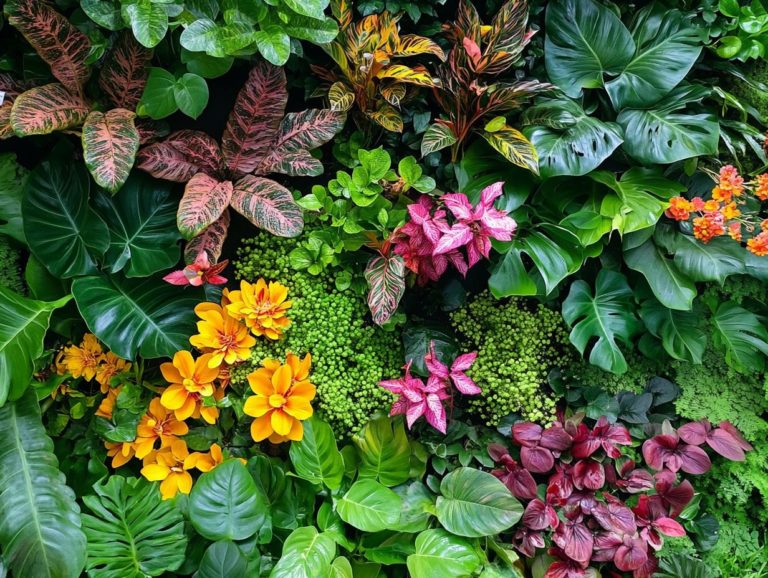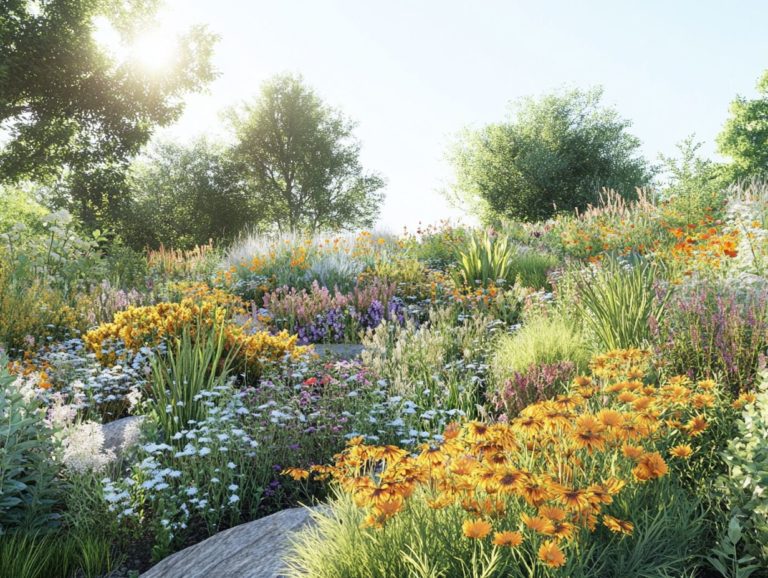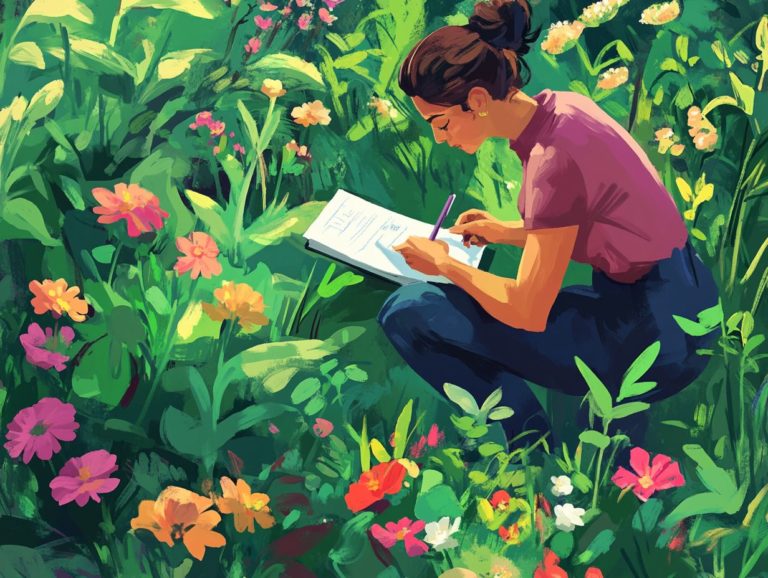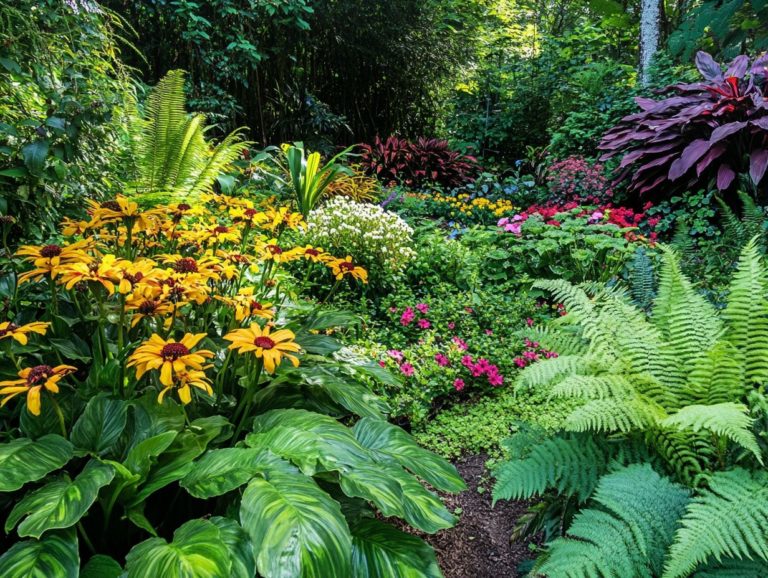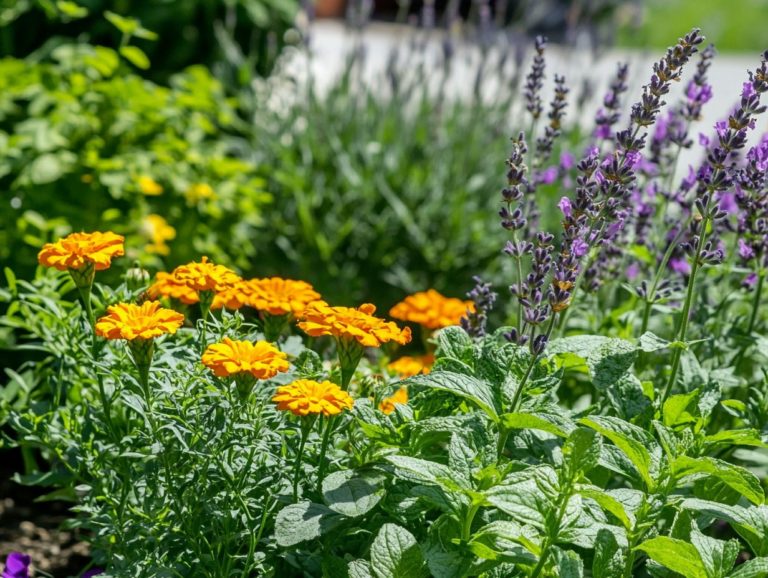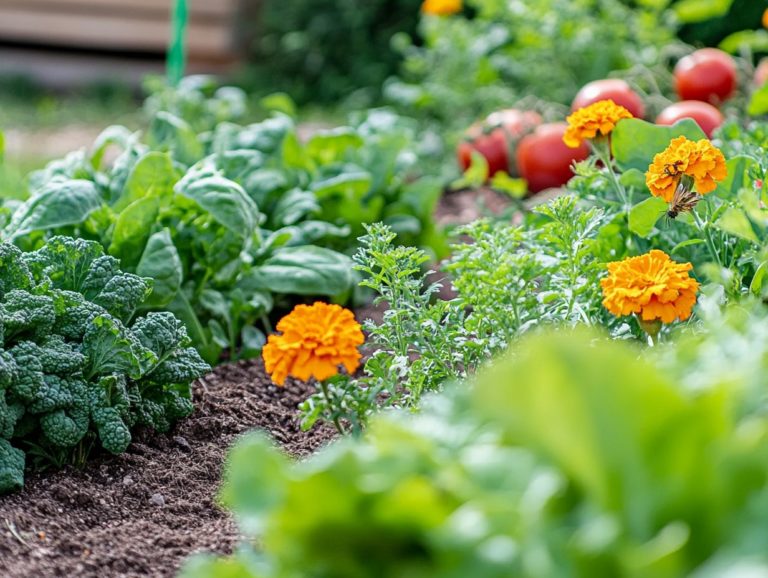“Choosing Plants for Shade in Your Garden”
Creating a vibrant garden doesn t always require basking in the sun. Shade is equally essential in the art of gardening.
Understanding the significance of shade can profoundly benefit both your plants and your gardening endeavors. This exploration delves into the myriad advantages of shade, key factors to consider when selecting shade plants, and the diverse types available from flowering varieties to groundcover options.
You will also find valuable tips for designing a stunning shade garden and maintaining your plants for optimal growth. Jump in and discover how to make the most of those cool spots in your garden!
Contents
Key Takeaways:
- Shade protects plants from harsh sunlight and creates a cooler environment.
- Consider light, soil, and climate when choosing shade plants for your garden.
- Explore various types of shade plants to create a visually appealing garden.
The Importance of Shade in Gardening
Shade is essential for gardening. It provides a refuge for shade-loving plants and enhances your garden’s beauty. By crafting a well-balanced shade garden, you can seamlessly integrate a variety of shade plants that not only endure but truly flourish in both full and partial shade conditions.
This is crucial for maintaining the health of your plants, particularly in areas where direct sunlight is limited. Shade also provides relief during hot summer months, promoting moisture retention and creating a distinctive environment for a diverse selection of plants.
Benefits of Shade for Plants and Gardeners
Shade benefits both plants and gardeners in many ways, elevating your gardening experience with flourishing blooms and vibrant colors.
When utilized effectively, shade enhances moisture retention in the soil, dramatically reducing evaporation rates. This is especially beneficial for those who prefer a low-maintenance approach to gardening. A stable environment fosters a thriving habitat for shade-loving plants, such as flowering perennials, which are celebrated for their exquisite blooms and remarkable resilience.
These plants not only showcase unique features like lush foliage and extended flowering seasons but also enrich your garden’s aesthetic while demanding less water and care. They are truly ideal companions for those shaded areas, making your gardening journey both beautiful and effortless.
Factors to Consider When Choosing Shade Plants
When you choose shade plants for your garden, it s imperative to consider several factors. Pay attention to light requirements, soil conditions, and climate considerations to ensure that your plants thrive and enhance the aesthetic beauty of your outdoor space.
Light Requirements
Understanding the light requirements of plants is essential when designing your shade garden. Different shade-loving plants thrive under varying conditions of full shade and partial shade. Recognizing these nuances can elevate your gardening game.
For example, ferns typically prefer deep, moist shade, flourishing in areas that receive minimal direct sunlight. On the other hand, hostas can handle a bit more light and often thrive in dappled shade. If you place shade plants in inadequate lighting, they may not bloom as expected, resulting in a garden display that falls short of your vision and compromising the plants’ vitality.
Inadequate light can stunt growth, leading to stretched-out leaves and diminished resilience against pests and diseases. That’s why it’s crucial to consider these factors when planning your shade garden. By positioning each plant according to its specific light needs, you can ensure optimal health and beauty throughout your outdoor space.
Soil Conditions
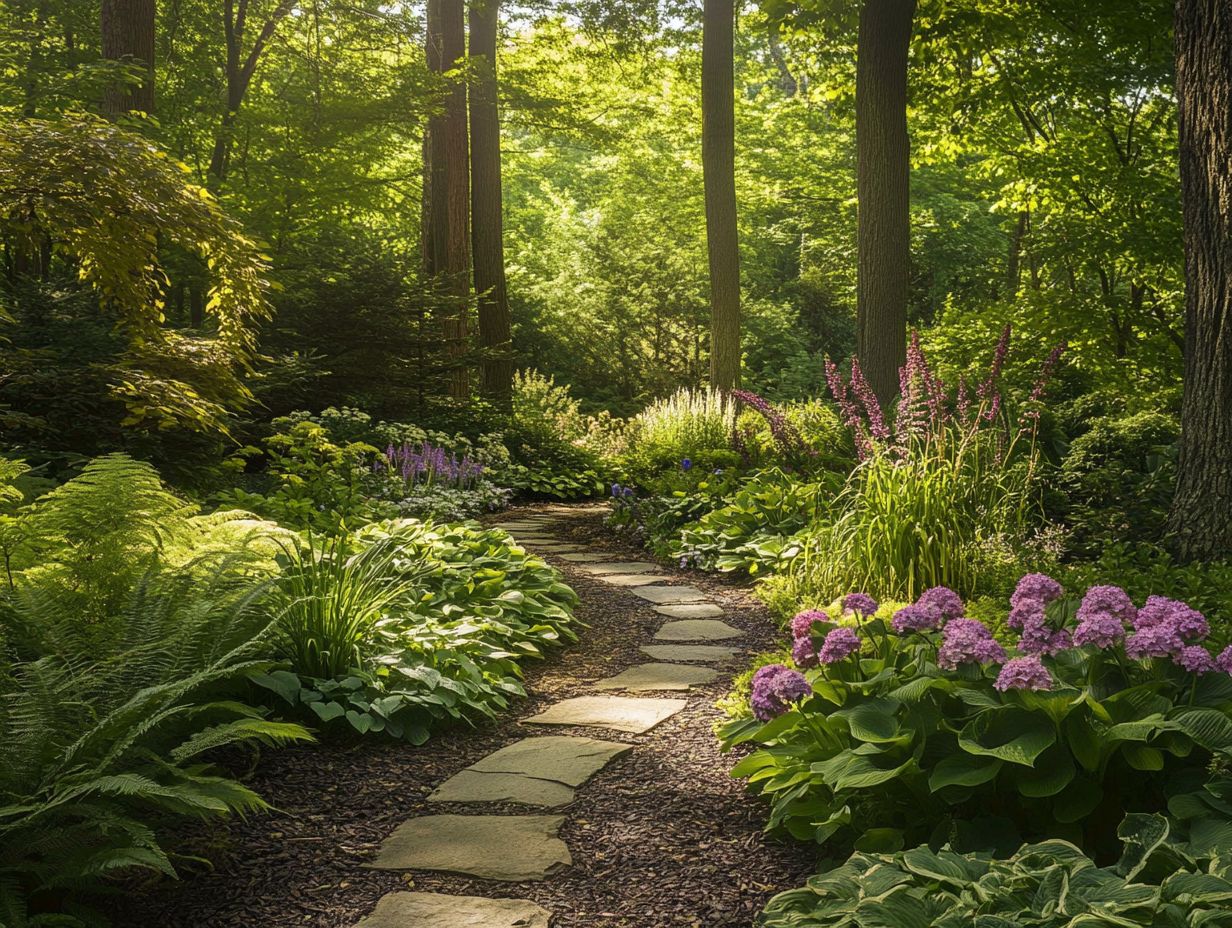
The soil conditions in your shade garden are crucial for ensuring plant success. Shade-loving plants thrive in well-drained, nutrient-rich soil tailored to their specific moisture needs.
Conducting soil testing is vital. It allows you to identify pH levels and nutrient deficiencies that can be addressed for optimal growth. For example, ferns and hostas are particularly sensitive to soil composition, flourishing in loamy and slightly acidic environments.
Add organic matter like compost. This boosts soil quality, improves water retention, and nurtures helpful organisms!
Understanding soil additives can greatly influence the growth and health of the plants you choose for your shaded spaces.
Climatic Considerations
Climatic considerations are crucial when choosing shade plants. A deep understanding of your local climate and plant hardiness can greatly impact which shade-loving plants will flourish in your garden.
Selecting plants that align with specific climate zones is vital, especially in regions with cold winters. This ensures their vitality and resilience. For colder climates, opt for plants that are hardy against low temperatures and drought-tolerant for a sustainable, low-maintenance garden.
These resilient plants require less water, which is beneficial during drought periods. This conservation allows you to maintain a visually appealing landscape. Thoughtfully choosing these robust varieties minimizes upkeep, ensuring your garden remains vibrant and healthy through seasonal transitions.
Types of Shade Plants
You have a wealth of shade plants to enhance both the beauty and functionality of your shade garden. Consider incorporating flowering plants, lush foliage plants, and versatile groundcover plants.
Each type brings unique textures and vibrant colors, transforming your garden into a stunning retreat.
Flowering Plants
Consider flowering plants like astilbe, foxglove, and primrose. They offer unique blooms and a rich tapestry of colors that can brighten even the darkest corners of your space.
These plants bloom from early spring to late summer, keeping your garden visually captivating throughout the seasons. With vibrant purples and pinks to soft whites and yellows, their diversity enchants the eye and attracts essential pollinators like bees and butterflies.
When placed thoughtfully among other shade-loving plants, they create harmonious compositions that elevate each other’s beauty while thriving in similar soil conditions. This compatibility fosters a lush, biodiverse environment that supports various beneficial insects, enhancing the overall health of your garden landscape.
Foliage Plants
Foliage plants like heuchera, coral bells, and ferns add an exquisite touch to your shade gardens. They showcase stunning foliage and a captivating range of colors. These versatile beauties enhance your garden’s design by providing a contrasting backdrop for flowering varieties, allowing those blooms to shine with greater brilliance.
Beyond their visual appeal, these resilient plants, with diverse leaf shapes, ensure your garden remains attractive all year long. For optimal growth, plant them in well-drained soil and provide either filtered sunlight or partial shade, tailored to their specific requirements.
Regular watering and occasional feeding will keep them lush. These verdant companions contribute to the beauty of your garden in every season.
Groundcover Plants
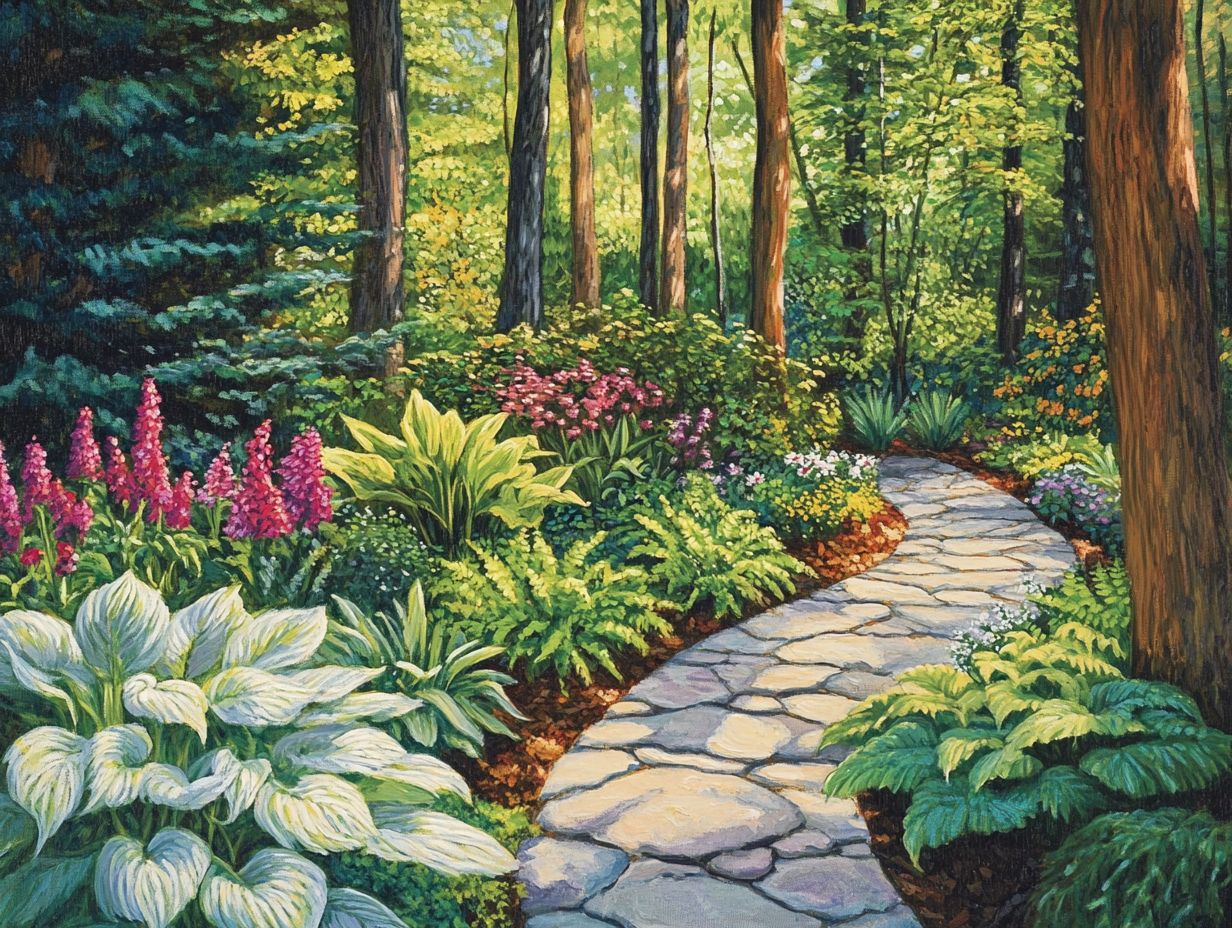
Groundcover plants like ivy and sweet potato vine not only serve functional roles but also elevate the look of your shade gardens. They provide low-maintenance options while attracting pollinators with their unique charm.
These resilient plants excel at filling in gaps and creating lush, green carpets. They also prevent soil erosion effectively. By establishing a dense root system, they anchor the soil in place, reducing runoff during heavy rainfall and minimizing nutrient loss.
Bring your shade garden to life by grouping these plants together for a more cohesive appearance or interspersing various species to add visual interest. Choosing native groundcovers enhances your garden’s impact, promotes biodiversity, and supports local wildlife making them a wise choice for any environmentally conscious gardener, reminiscent of rustic gardens.
Designing a Shade Garden
Designing a shade garden requires thoughtful attention to design elements, color, and texture. These components help craft a harmonious landscape that embraces the unique advantages of shade-loving plants. Carefully selecting these elements can create a serene retreat that thrives in the gentle embrace of filtered light.
Creating a Balanced and Aesthetic Layout
Creating a balanced and visually pleasing layout in your shade garden is essential for maximizing visual appeal. It allows vibrant colors to stand out against the lush green foliage, enhancing your overall garden experience.
To achieve this harmonious environment, strategically place plants based on their height and texture. Taller ferns or astilbes can serve as stunning backdrops, while mid-height plants like hostas or heucheras create a lush middle layer. Combine these with lower-growing ground covers, such as moss or creeping thyme, for a delightful textural contrast.
Imagine a tiered garden where towering columbines gently sway above a sea of dainty forget-me-nots, adding both depth and interest.
This thoughtful arrangement elevates the appearance and guides visitors eyes through the tranquil space, making your garden feel expansive and inviting.
Tips for Maintaining Shade Plants
Proper maintenance of your shade plants is essential for their longevity and vitality. This involves a careful approach to watering, fertilizing, and regular pruning. All these practices contribute to a flourishing garden environment.
By dedicating time and care to these practices, you’ll create an idyllic space where your plants can thrive.
Watering and Fertilizing
Watering and fertilizing are fundamental for nurturing shade plants. They ensure the plants receive the moisture and nutrients needed for vigorous growth.
To manage watering effectively, assess the unique needs of your plants based on their environment. In well-drained, nutrient-rich soil, they usually thrive with deep watering less frequently typically once or twice a week. This approach allows their roots to extend and access moisture more effectively. Consider using drip irrigation, a method of watering plants directly at their roots, or soaker hoses to reduce evaporation.
Organic fertilizers are equally important as they provide essential nutrients and enhance soil structure, fostering healthier and more resilient plants. Combine careful watering with organic fertilizers. This winning strategy will help your shade plants thrive beautifully!
Pruning and Shaping
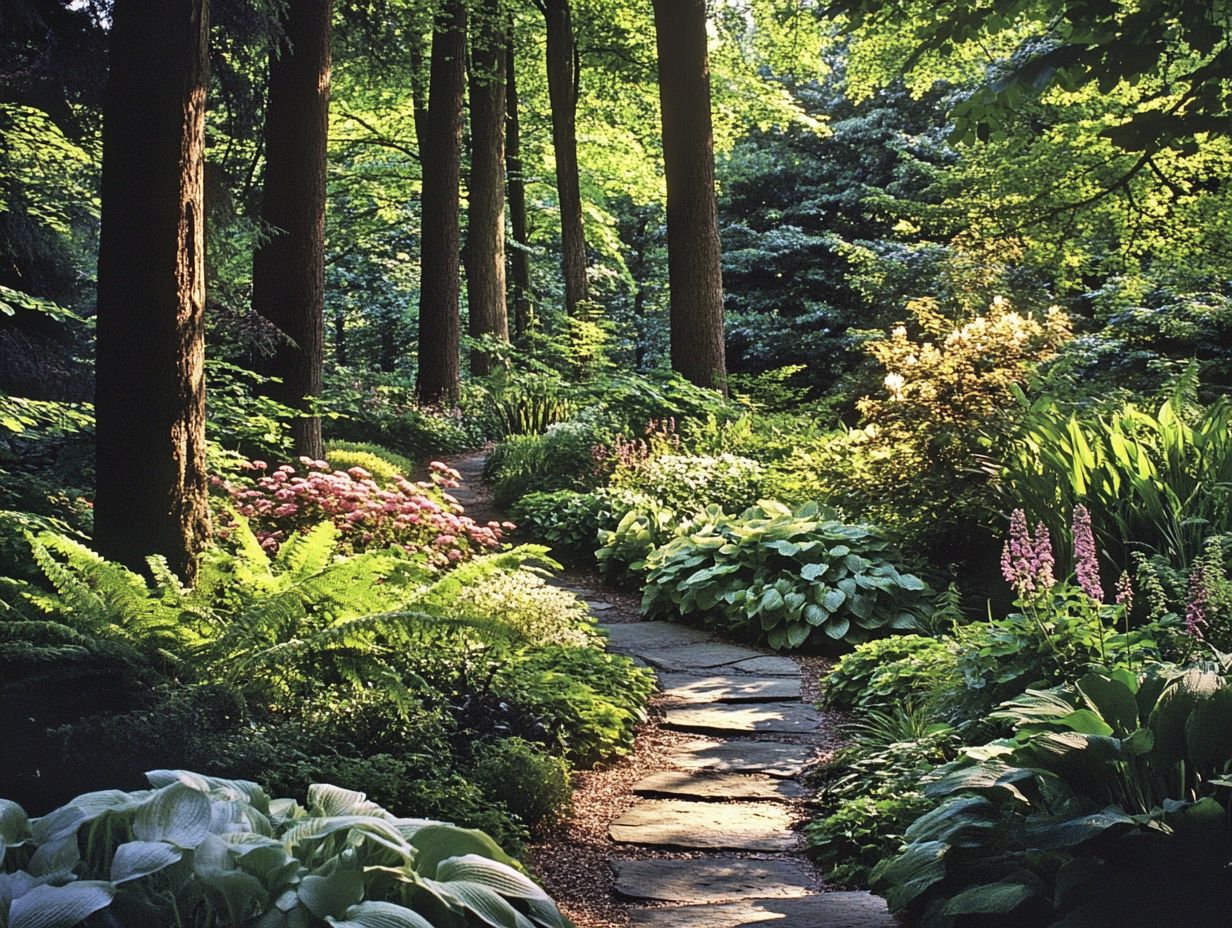
Pruning and shaping are essential practices that elevate the beauty of your garden while fostering healthy growth in shade plants and flowering shrubs.
Understanding the intricacies of when and how to prune can truly transform your gardening experience. Late winter or early spring is generally the ideal time for most deciduous plants. Their dormancy allows for effortless shaping without risking their health.
You can employ various techniques thinning, heading back, and cleaning to cater to different species and achieve optimal results. Pruning effectively helps maintain your plants’ size and shape while promoting vibrant blooms and lush foliage. This significantly enhances your garden’s allure.
By strategically selecting pruning methods, you can even deter deer, adding an extra layer of advantage to this critical gardening practice.
Frequently Asked Questions
What is considered a shady area in a garden?
A shady area in a garden receives less than 6 hours of direct sunlight per day. This can be caused by buildings, trees, or other structures that block the sunlight.
Why is it important to choose plants that are suitable for shade?
Choosing plants that are suitable for shade is important because they thrive in low light conditions. If you select plants requiring full sunlight, they may struggle to survive and may not produce flowers or fruit.
What are some popular plants that do well in shade?
Popular plants that do well in shade include hostas, ferns, impatiens, begonias, and hydrangeas. These plants have adapted to thrive in low light and can add color and beauty to a shady garden.
Can I grow vegetables or herbs in a shady garden?
Yes, several vegetables and herbs, such as leafy greens, broccoli, and mint, can tolerate partial shade. However, they may not grow as large or produce as much as they would in a sunny location.
How can I improve the amount of sunlight in my garden?
If your garden is mostly shaded, try trimming or removing nearby trees or structures to allow more sunlight to filter through. You can also choose plants that tolerate partial shade or dappled sunlight.
Are there any special care tips for maintaining plants in a shady garden?
Plants in a shady garden may require less water and fertilizer than those in sunny locations. It is also important to monitor for pests and diseases, which may be more prevalent in a shady environment. Pruning and thinning can help increase airflow and light penetration.
Start your pruning journey today and explore local gardening experts for more tailored advice!

